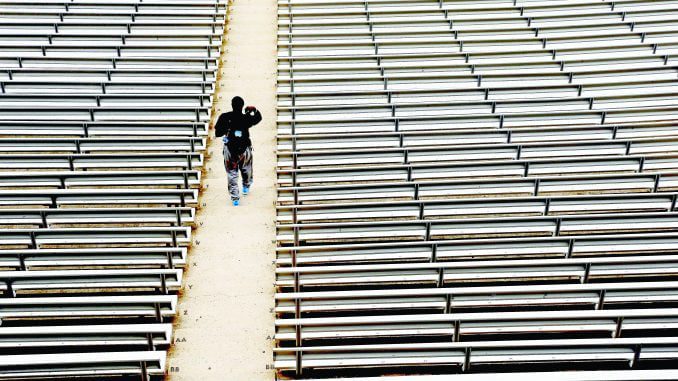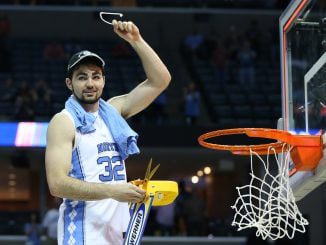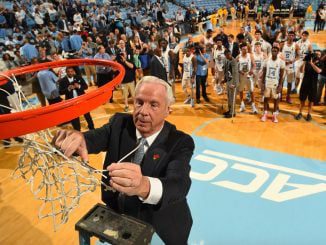
Mack Brown would like everyone to know that taking a COVID-19 test doesn’t hurt all that much.
“They take a swab and put it up in your nose,” he said. “Then they pressed it back some. It felt like I was going to sneeze. It was a weird feeling. It wasn’t painful, but it was uncomfortable. Then they take it out and say, ‘Thanks. Goodbye.’ It’s a very short test. They’re doing a better job than when they started with making it less painful.”
That’s good news since Brown and the rest of the North Carolina football team can expect to be tested regularly.
“If we need to do it every week, it’s not a problem,” he said. “It’s not uncomfortable enough. It’s very quick.”
The players began reporting back to campus last week, for conditioning and voluntary workouts, but the pandemic has changed the way everything is done.
The first wave of players reported in mid-June and got tested. They then had to avoid each other for the weekend while waiting for the results to come back. Then workouts began last Monday.
That weekend was a tough one for the players, and the coaches had to make sure they understood the importance of following the guidelines.
“Players wanted to see each other,” Brown said. “They haven’t seen each other for a while. They want to hug each other. They want to stand and talk.”
All of which was forbidden. Now that group will have to help police things as more players arrive.
“The first group that came in are the ones that will teach the next group,” Brown said.
Even before the players returned, the coaching staff worked to make sure that the members of the team — and their families — were comfortable with coming back to campus.
“We had our doctors talk to the parents without the players or coaches on,” Brown said. “They met with the parents about an hour without us being there, so they could ask questions without thinking we as coaches would be scrutinizing who was nervous.”
Now that the players are coming back, the rules they must follow are far from common sense and often go against human nature.
“All our meetings with players are still on Zoom,” Brown said. “Even if they’re in the building. (The players) can go sit in their meeting room, but the coach has to be in his office, and he can Zoom with them, which I don’t understand.”
The players can meet with coaches in person, one-on-one, “but they can’t talk about football,” Brown pointed out.
While the players are coming back in groups, the coaches are also phasing their return. Currently, the staff is in the office three days a week and working from home on Mondays and Fridays. There’s also another group of employees who are working from home full-time to reduce the number of potential sources of infection in the football building.
The meeting rooms have also been shuffled, with each position group moving into a larger room to give more space for social distancing.
“Our defensive coaching staff has moved downstairs, and they’re in the defensive back room,” Brown said. “Our offensive line moved to the Swofford Auditorium (previously used for full team meetings), and our receivers moved to the offensive line room.”
As for when the full team arrives, that’s a question still under consideration.
“How do you have a team meeting?” Brown said. “Do you have to be outside now? We can’t get all the players into the Swofford Auditorium for a team meeting and still social distance. At some point, we feel we can build a bubble around our team. That’s when the doctors feel like we can be in our dressing room together and have our meetings.”
Until then, even getting dressed has to be staggered.

“The first phase of players dressed in the locker room. The second phase (arriving this week) will dress in the lacrosse team’s locker room. The third will be someplace else, and the fourth will be someplace else,” Brown said.
Other issues still need to be worked out. Will coaches have to wear masks on the sidelines or at practice?
“We haven’t been told,” Brown said.
And which mask is best?
“Finding the right mask,” Brown said. “Can you use a shield? What’s comfortable? Can you talk?”
Another guideline is also causing the coaching staff to rearrange things on the fly.
“We’re not to stand next to anyone without social distancing for more than 15 minutes,” Brown said. “That’s huge. The doctors say that makes a difference.”
It means that practices will look different.
“Where players stand while the team is out there,” Brown said. “We’ll make our periods 12 minutes or 10 minutes. They won’t be 15. Will we need to practice our ones and fours and twos and threes at different times?”
It will even have an impact once the games start.
“On the bench, you can’t sit the offensive line next to each other for more than 15 minutes,” he said. “So the benches will need to be spread out. We’re looking to have the coaches box extended to the full length of the field so players can spread out more.”
The rules show just how fragile football’s return is. It only takes a slip up or two to send things back to square one.
“If someone gets the virus on your team, and they’ve been in contact with someone against the guidelines — you’ve broken social distancing rules. You didn’t wear a mask — then they’re all going to be quarantined like the player that’s got the virus,” Brown said.
So the players and coaches will live with the inconvenience. And once a week, they’ll visit the doctor with the swab to see how they’re doing.



